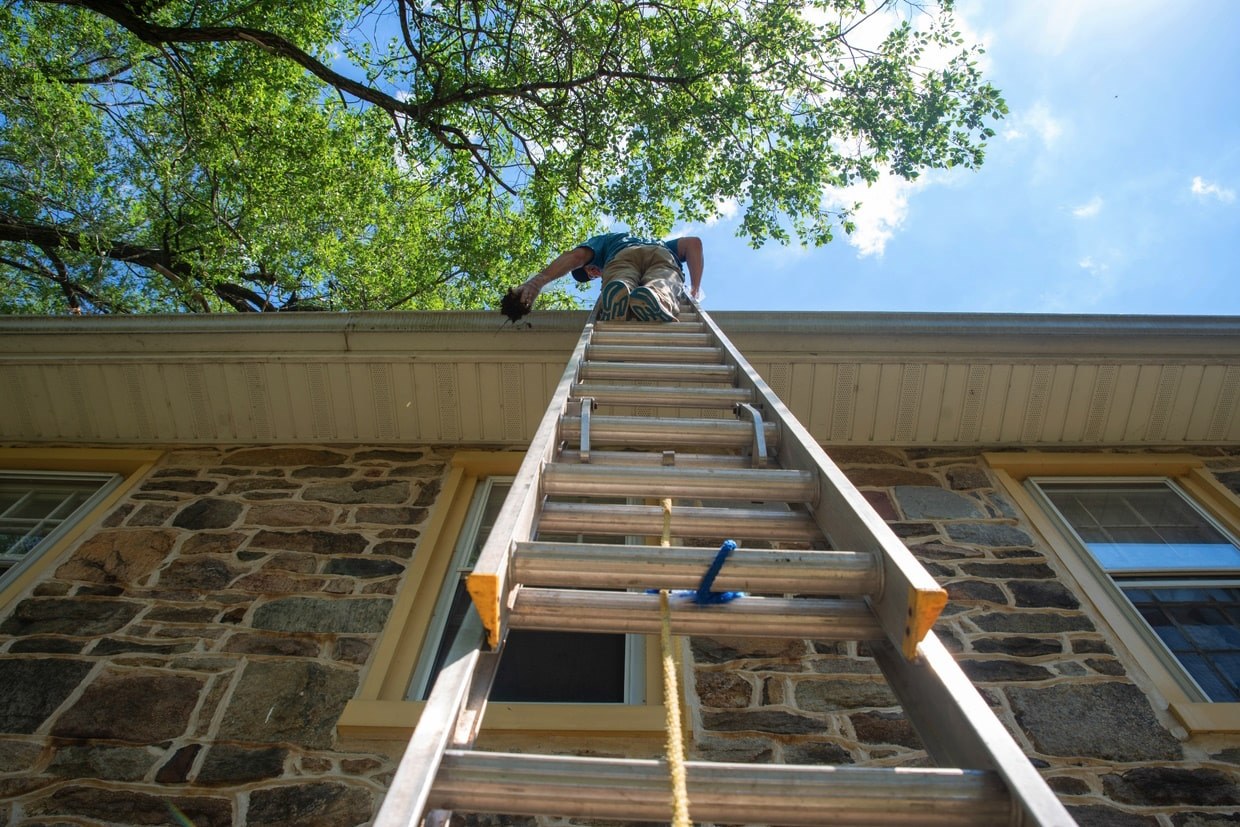
Raising an extension ladder is a task that often appears deceptively simple; however, it entails significant risks that can lead to dire consequences if not properly managed. The act of elevating oneself using a ladder, particularly an extension ladder, is characterized by multiple potential hazards that can compromise the safety of workers. This article delineates the critical actions that can be considered hazardous while raising an extension ladder and provides essential safety tips aimed at mitigating these risks.
Understanding the nature of extension ladders is paramount. These versatile instruments are designed to extend and reach elevated heights, making them invaluable in sectors like construction, maintenance, and painting. However, their misuse or improper handling can result in catastrophic accidents, including falls, injuries, or even fatalities. With this foresight, we shall delve into specific actions that warrant heightened caution.
One major hazard arises from the improper positioning of the ladder. Adequate placement of the ladder’s base is crucial for stability. Workers often neglect to ensure that the ladder is situated on a firm, level surface. This negligence can lead to tipping or sliding, particularly on uneven terrain. Thus, before raising the ladder, assess the ground: look for a stable, flat area devoid of debris or loose materials. If the terrain is uneven, consider using base stabilizing devices or modifying the climbing strategy to avoid risks associated with instability.
Equally concerning is the angle of ascent when raising an extension ladder. The American National Standards Institute (ANSI) recommends a 75-degree angle. Many workers, however, intuitively position the ladder in a steeper or shallower angle without cognizance of the associated dangers. When the ladder is too vertical, it becomes susceptible to toppling; conversely, an angle that is insufficient compromises the worker’s ability to maintain balance. Conducting a simple angle check by using the “4-to-1” rule—ensuring that for every four feet of height you wish to reach, the base of the ladder should be one foot away from the wall—can be pivotal in ensuring a safe incline.
Heeding the surroundings plays a significant role in ladder safety, yet many workers overlook this aspect. Intruding elements such as electrical wires, overhead ceilings, or unstable scaffolding can pose unforeseen dangers during the ladder-raising process. Electric shock is a life-threatening risk when encountering power lines. Prior to the ascent, perform a thorough examination of the environment, identifying hazards and considering the use of non-conductive ladders when necessary.
Proper grip and hand placements while raising an extension ladder are also critical to safety. Improper handling occurs when workers attempt to raise the ladder using only one hand, which can lead to loss of control. It is imperative to employ both hands, ensuring a firm grip while maintaining overall body balance. Engaging in this practice not only enhances stability during placement but also minimizes the likelihood of dropping the ladder or misaligning it with the intended support structure.
Moreover, ensure the extension ladder is secured before any climbing takes place. A unique but often neglected action is not adequately locking the ladder sections, a measure that could prevent the sudden collapsing of the ladder during ascent. Familiarizing oneself with the specific locking mechanisms of the ladder and conducting a pre-inspection can mitigate this hazardous oversite.
Another aspect that warrants attention is the number of individuals involved in raising the ladder. While one person may be able to raise a smaller ladder independently, larger extension ladders typically necessitate additional manpower. Coordinated efforts allow for greater control and stabilization during the raising process. Communicating clearly regarding the timing and strategies of ascent can facilitate a smoother operation and enhance safety.
Physical fitness and personal alertness are integral to maintaining safety while working with ladders. Fatigue and distraction can impair judgment significantly, which increases the potential for accidents. Workers should undergo regular training sessions to refine their understanding of proper ladder handling techniques, but they must also be encouraged to recognize their physical state before engaging in ladder tasks. If exhaustion or distraction sets in, it is advisable to postpone the work until a more suitable time.
In conclusion, raising an extension ladder demands a comprehensive understanding of safety measures to circumvent potential hazards. The facets of proper positioning, correct angle, environmental awareness, secure handling, team coordination, and personal fitness are collectively pivotal in safeguarding against accidents during this task. The incorporation of these rigorous protocols ensures not only the safety of individual workers but also contributes to a culture of safety in the workplace. With a vigilant approach and adherence to these methods, the dangerous perception of climbing ladders can transform into a significantly more manageable undertaking.
